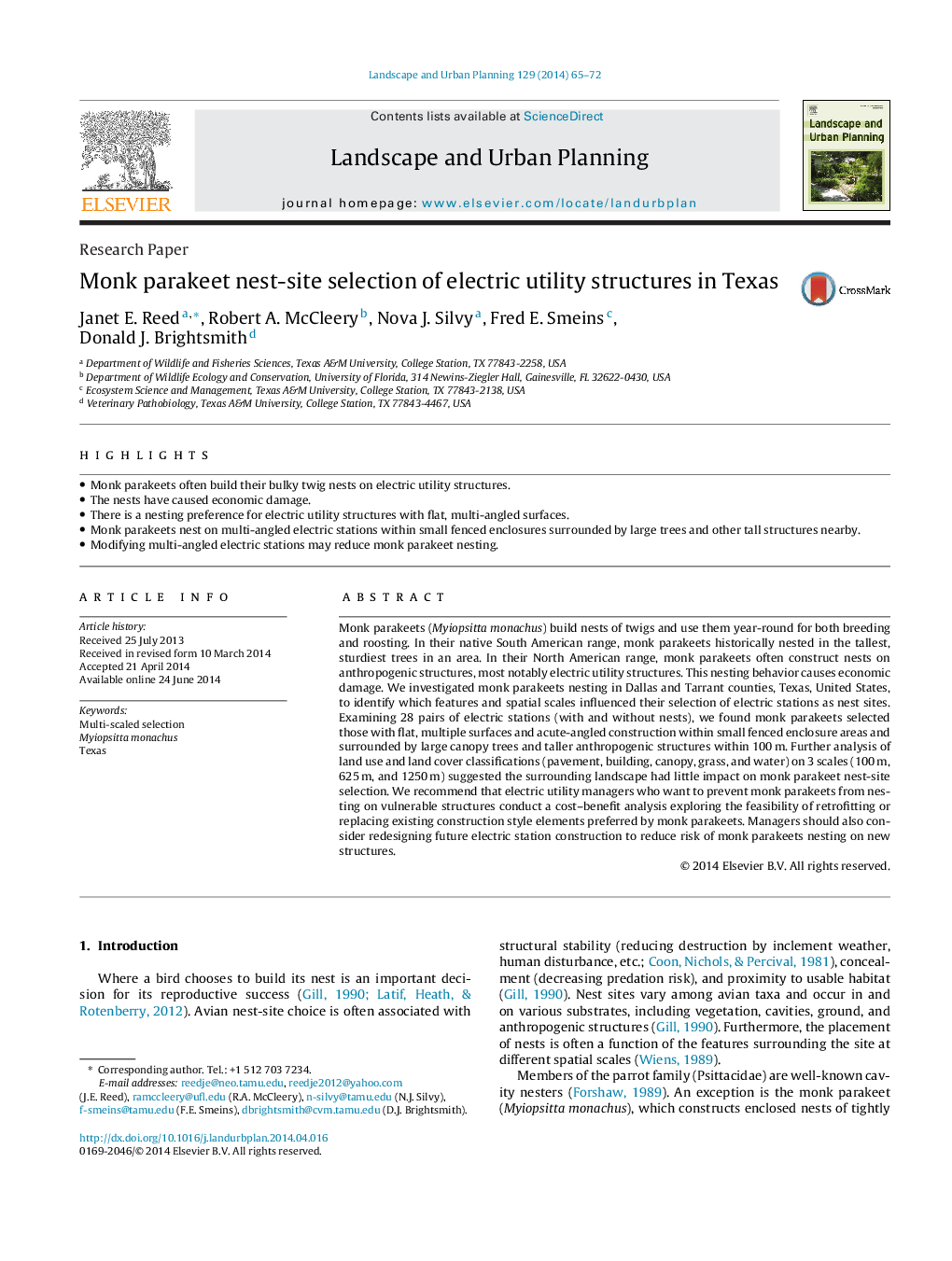| کد مقاله | کد نشریه | سال انتشار | مقاله انگلیسی | نسخه تمام متن |
|---|---|---|---|---|
| 7461393 | 1484629 | 2014 | 8 صفحه PDF | دانلود رایگان |
عنوان انگلیسی مقاله ISI
Monk parakeet nest-site selection of electric utility structures in Texas
ترجمه فارسی عنوان
انتخاب محل انشعاب مونک از سازه های الکتریکی در تگزاس
دانلود مقاله + سفارش ترجمه
دانلود مقاله ISI انگلیسی
رایگان برای ایرانیان
کلمات کلیدی
موضوعات مرتبط
علوم زیستی و بیوفناوری
علوم کشاورزی و بیولوژیک
بوم شناسی، تکامل، رفتار و سامانه شناسی
چکیده انگلیسی
Monk parakeets (Myiopsitta monachus) build nests of twigs and use them year-round for both breeding and roosting. In their native South American range, monk parakeets historically nested in the tallest, sturdiest trees in an area. In their North American range, monk parakeets often construct nests on anthropogenic structures, most notably electric utility structures. This nesting behavior causes economic damage. We investigated monk parakeets nesting in Dallas and Tarrant counties, Texas, United States, to identify which features and spatial scales influenced their selection of electric stations as nest sites. Examining 28 pairs of electric stations (with and without nests), we found monk parakeets selected those with flat, multiple surfaces and acute-angled construction within small fenced enclosure areas and surrounded by large canopy trees and taller anthropogenic structures within 100Â m. Further analysis of land use and land cover classifications (pavement, building, canopy, grass, and water) on 3 scales (100Â m, 625Â m, and 1250Â m) suggested the surrounding landscape had little impact on monk parakeet nest-site selection. We recommend that electric utility managers who want to prevent monk parakeets from nesting on vulnerable structures conduct a cost-benefit analysis exploring the feasibility of retrofitting or replacing existing construction style elements preferred by monk parakeets. Managers should also consider redesigning future electric station construction to reduce risk of monk parakeets nesting on new structures.
ناشر
Database: Elsevier - ScienceDirect (ساینس دایرکت)
Journal: Landscape and Urban Planning - Volume 129, September 2014, Pages 65-72
Journal: Landscape and Urban Planning - Volume 129, September 2014, Pages 65-72
نویسندگان
Janet E. Reed, Robert A. McCleery, Nova J. Silvy, Fred E. Smeins, Donald J. Brightsmith,
